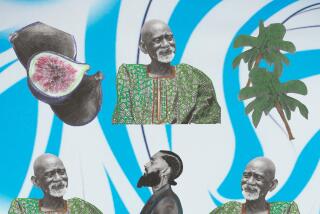Unorthodox ‘Messiah’ was a mirror of his times
The history of religion is full of strange stories, and one of the strangest is that of Sabbatai Sevi, the 17th century “false Messiah” who in his brief but spectacular career commanded an astonishingly huge following, not only among Jews in the Ottoman Empire, where he was born and spent most of his life, but also among Jews in Poland, Germany, Italy, England and Holland. Indeed, in the years 1665 and 1666, at the height of his fame, it seemed almost everyone had heard about this Jewish Messiah who was going to lead his people -- including the 10 Lost Tribes! -- to reclaim the land of Israel and establish peace and justice on earth.
In those years, Israel (and most of the Middle East, North Africa, Greece and the Balkans) was part of the powerful Ottoman Empire, whose capital was Istanbul. Understandably, Ottoman officials were alarmed by wild talk of an apocalyptic new world order. Brought to the sultan’s palace in 1666 and invited to demonstrate his miraculous powers by withstanding a volley of arrows, the would-be Messiah prudently withdrew his claims of quasi-divinity and took advantage of the sultan’s offer to convert to Islam in exchange for his life. Although the shock wave of Sabbatai’s apostasy shattered the momentum of his messianic movement, some of his followers continued to believe, a number of them converting to Islam, the rest continuing as Jews. Sabbatai himself seems to have embraced Islamic ideas and practices while maintaining a core of Jewish beliefs until his death in 1676.
In “The Lost Messiah,” John Freely provides a splendidly detailed, meticulously researched account not only of Sabbatai’s amazing life but also of what became of his followers, a tiny number of whom continued to hold on to their beliefs about 300 years later. Freely, a World War II Navy veteran and a physicist by training, has lived in Turkey for much of his adult life and has written many books on Turkey and the Ottoman Empire, including “Inside the Seraglio” and “Istanbul: The Imperial City.” Recounting how he first became interested in Sabbatai in 1960, Freely comments upon the difficulties of a rational 20th century American trying to understand messianic mysticism: “[M]y training as physicist was definitely a handicap....Only when I began to look upon the Kabbalah as a form of cosmology, though based on mystical beliefs rather than the laws of mathematical physics, did I begin to make some headway.” Freely acknowledges that he has relied heavily on Gershom Scholem’s pioneering books on the Kabbalah, messianic mysticism and Sabbatai Sevi.
Sabbatai Sevi (also spelled Shabbetai Zvi) was born, as his name indicates, on a Sabbath day, Aug. 1, 1626, the middle son of a Jewish merchant in Smyrna. A brilliant student of traditional rabbinical texts, he also immersed himself in Kabbalist mysticism. In 1648 he experienced an “illumination” that convinced him that he was the Messiah. But not until 1665 did he proclaim this publicly.
What manner of man was Sabbatai Sevi? Unorthodox in more ways than one: He ate non-kosher foods, turned fast days into feast days, invented new commandments, suspended old ones, suggested that Jews acknowledge Jesus as a prophet, encouraged women as well as men to prophesize and was (probably wrongly) accused by his enemies of indulging in orgies. After converting to Islam, he enjoyed hobnobbing with a Sufi dervish almost as unorthodox as himself. But all was not ecumenical sweetness and light. Sabbatian believers also went in for more extreme measures, like self-flagellation, and they took part in violence against non-Sabbatian Jews (whom they called “nonbelievers”), although, to be fair, the “nonbelievers” had treated the unorthodox Sabbatai just as badly and later helped contribute to his downfall. Still, at the height of the messianic fever, rabbis who had doubts actually kept silent for fear of offending their congregations.
Freely portrays a world in which the empiricist methods of science were not the primary means of ascertaining truth. Confronting the phenomenon of a man who claimed to be the Messiah, thoughtful people -- rabbis, merchants, physicians, government officials and community leaders -- seemed to judge Sabbatai by the depth of his religious learning and the power of his personality. Finding him deeply learned, amazingly intelligent, unusually charming and utterly compelling, some of the most respected members of these communities became his followers. Freely quotes numerous sources testifying to his charisma: “When Sabbatai Sevi chanted psalms ... it was impossible to look into his face, for it was like looking into fire. This has been attested to by many others, and even by his opponents,” declared one Sabbatian. Others who met him enthused over his tall, imposing stature, his lovely singing voice, his handsome beard, even his healthy corpulence.
Charisma is a quality far from negligible in our own time, and it is well to remember that the Greek root of the word connotes someone who is divinely favored. It is instructive to see how Sabbatai’s faithful followers kept coming up with rationalizations to keep their faith alive in the face of his imprisonment, apostasy and, later, his death. His imprisonment and apostasy were seen as part of a larger plan of redemption. His death was not a death but a mere “occultation” that prevented him from being seen.
All his life, Sabbatai seemed to alternate between periods of dark despair and exalted “illumination.” To his followers, these cycles corresponded to a mystical Kabbalistic pattern of suffering and redemption. A modern reader might well wonder if Sabbatai may have been what we now call a manic-depressive or bipolar personality. Similarly, when we learn that as a young man he was twice married and twice divorced, accused in both cases of having failed to consummate the marriage, we may wonder about his sexual orientation. Intriguing as it is to indulge in such speculations, it is much to his credit as a historian that Freely refrains from them. By presenting the “lost Messiah” in the context of the age in which he lived and died, Freely helps us see both the parallels between then and now, and the very real differences.
More to Read
Sign up for Essential California
The most important California stories and recommendations in your inbox every morning.
You may occasionally receive promotional content from the Los Angeles Times.










